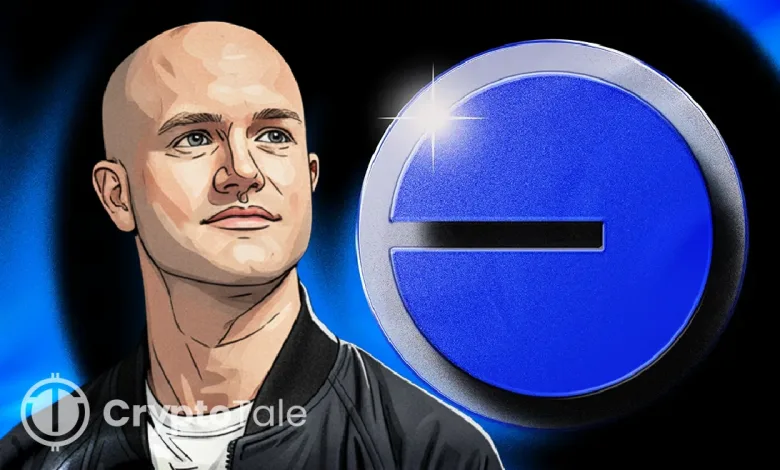Coinbase Weighs Base Token Launch Amid Growth and Regulation

- Base has grown past $8.4 billion in value locked since its launch and expansion in 2023.
- Jesse Pollak confirmed Base is exploring a token while stressing plans remain at early stages.
- Coinbase must balance shareholder duties with token governance and securities law compliance.
Base, the layer-2 blockchain developed by Coinbase, is exploring the launch of a native token. The disclosure signals a potential turning point for how publicly listed exchanges balance innovation with regulation. At the BaseCamp event, Jesse Pollak, the network’s creator, confirmed, “We’re going to be exploring a network token.” He added, “I will be up front with y’all; it’s early,” signaling that the plan remains exploratory and without a set timeline.
Coinbase CEO Brian Armstrong reinforced the announcement in a post on X, noting the token could accelerate decentralization and boost growth for creators and developers. Armstrong clarified there are no definitive plans, framing the step as a philosophical update. This shift comes despite Coinbase stating in 2023 that it had no plans to issue a Base token.
Growth of Base and Potential Token Role
Since its 2023 launch, Base has grown rapidly, accumulating about $5 billion in total value locked (TVL). In 2025 alone, it has added nearly $1.7 billion. Recent data show Base’s TVL surpassing $8.4 billion after stablecoin-driven activity, securing its position as the second-largest Ethereum Layer-2 chain behind Arbitrum.
Despite the exploration, Base continues to use ETH for gas fees, keeping it gas-agnostic until a token is formally defined.
Pollak stated that Base is committed to building the token on Ethereum and working with regulators on its issuance and distribution. However, the potential utility of the token remains unclear, and it is also not defined whether the token will serve governance, validator rewards, or on-chain utility.
Regulatory Scrutiny and Governance Stakes
With Coinbase being a publicly listed company, the token plan carries heavy implications, with industry watchers comparing the scenario with other exchange-linked tokens such as Binance’s BNB and Crypto.com’s CRO, both of which fueled network growth, drawing regulatory scrutiny.
Coinbase faces unique obligations to shareholders, raising questions about conflicts between equity holders and token holders. Pollak and Armstrong have stressed that no firm plans exist yet, reflecting the early stage of discussions.
Layer-2 tokens often serve as tools to bootstrap growth, reward validators, and decentralize governance. Yet tokens have also attracted regulatory challenges where profit expectations or centralized control became evident. The key question remains: can Coinbase design a governance and incentive model that supports Base’s ecosystem without triggering legal or market risks?
Market observers are closely monitoring Base’s adoption metrics, including transaction volume and daily usage. Regulatory bodies often evaluate these figures when determining whether a token reflects an investment contract or remains a utility asset.
Related: Coinbase Expands AI and DeFi Strategy with x402 and Acqui-Hire
Analysts Keeping an Eye Out for Trends
A move places Coinbase at a critical juncture. Now the company must decide whether the Base token will be considered the new model of innovation in compliance or if it will be just another matter to be tested in court under securities law.
While on one side, Base’s momentum rises due to its TVL and network use, it also draws scrutiny. A key question is whether the token is seen as a governance token or a utility token, and if categorized, it could shape both regulatory action and investor sentiment. The coming period of regulatory review, disclosures, and design choices will define the path ahead and set a precedent for how exchange-backed blockchains balance innovation with compliance.




